The Timaru inventor who would awaken from dreams at night with three dimensional drawings revolving through his imagination. Pieces would be added and removed: a mental version of CAD. He would then get up and go to the kitchen table, working with pencil and ruler until he had his idea on paper. Colin Murdoch’s dreams, designs and sketches would become inventions used in every corner of the world.
He wanted to design a more effective vaccinator for animals and, in doing so, designed and invented the disposable syringe: a device that has saved millions of human lives. Sufferers of diabeties depend on Murdoch’s invention every day to administer their dose of insulin safely. He also conceived and developed the tranquilliser dart gun, which has saved the lives of millions of animals.
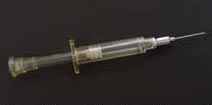
Early disposable syringe prototype
Colin Murdoch is an understated New Zealander with the ability to see possible solutions rather than insurmountable problems. He can claim to have revolutionised medical and veterinary science. It was Murdoch’s incredible creative and scientific mental dexterity combined with New Zealand’s post-War environment that led to his amazing list of achievements. It was an environment with few traditions, boundaries or regulations; an environment where innovation and creativity were necessary to combat the closed post-War economy and harsh natural conditions.
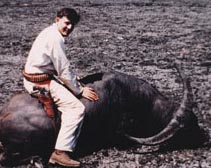
Colin Murdoch gives the wild west a rest, perched on a successfully subdued water buffalo
Making An Early Impression
Colin Murdoch was born in Christchurch in 1929. He was ambidextrous and dyslexic; the latter, he told the Timaru Herald in 1995, made school a struggle, but he outgrew the condition in later life.
Despite the problems he faced in the schoolroom, Murdoch had a natural aptitude for chemistry as well as displaying technical and mechanical skills, even if his inventions at the time were the sorts of things a mother may dread, such as his early, successful, attempt at making gunpowder.
At the age of 10 he made the discovery that mixing certain nitrates with sulphuric acid would cause an ignition. With this knowledge he built a firearm using a wick and a small, asbestos-filled hammer. The gun worked and he spent many afternoons hunting rabbits and hares with the homemade weapon. Despite studying firearms all his life, Murdoch says he has never seen another gun that works on the same principle. He still has the gun.
It was an uncluttered and free childhood in the wide open spaces of 1940s Canterbury. At the age of 13 he owned and drove a Morris Oxford Tourer (the law required a licence, but no one else seemed to mind the underage driver); at the same age he was awarded the Royal Humane Society Medal for saving a drowning man in the New Brighton estuary.
Invention of the Disposable Syring
Murdoch left school and trained as a pharmacist, the same profession as his father. It was a few years after the end of World War II and highly skilled people were in short supply in New Zealand, especially in rural areas. He soon found that with his background in science and pharmaceuticals the community was demanding a related, but distant, service from him – that of veterinarian. Much of his life’s work has alternated between the two professions.
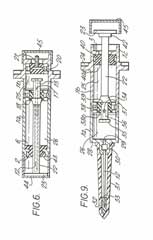
Design drawings for Murdoch’s wet/dry syringe
His first work towards inventing a new syringe came about through trying to build a more effective vaccinator for animals. Behind the invention was also a concern about human-borne diseases, as Murdoch told Bob Riley for the book Kiwi Ingenuity – A Book of New Zealand Ideas and Inventions in 1993:
“Dangerous bacteria and viruses were transferred from one patient to another by doctors who used improperly sterilised reusable glass hypodermic syringes and needles to inject other patients.”
“It is impossible to comprehend the catastrophic consequences of this situation if such practices were still occurring today. Diseases of such ultimate incurability and virulence as the HIV and AIDS virus, hepatitis A, B, C and most recently a new D form… and TB to name just a few. Instead of now having to care for, and contain, the several million infected people throughout the world who have AIDS, the numbers could well be 30 or 40 percent of the entire population.”
The idea came to Murdoch while he was in his mid-20s during a DC3 flight between the North and South Islands: a disposable, pre-filled vaccination syringe. He was 27, in 1956, when he took out his first patent.
Over the next 15 years Murdoch invented numerous permutations of the disposable syringe: disposable sterile pre-filled hypodermic syringes, prepared ampoule-type moulded plastic syringe darts, disposable automatic vaccinator syringes, sterile self-filling syringes for blood samples, variable dose vaccinator syringes and wet and dry disposable syringes. All quite different, but all breakthroughs in the area of medicine delivery.
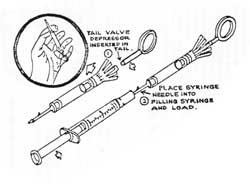
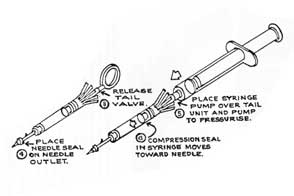
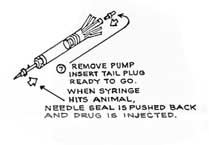
Diagram shows the loading and operating method of Colin Murdoch’s syringe projectiles. From Paxarms Brochure
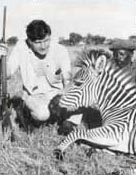
Colin Murdoch with the MK24 Syringe Rifle and an immobilised female zebra, taken in Africa
Prior to manufacture, Murdoch suggested his idea to officials at the New Zealand Health Department and other government organisations. All said the syringes were too futuristic, the need for them too remote. Yet the need for them was absolutely there: ever since penicillin had come into common use, doctors had found that the antibiotic crystals that formed in glass syringes had made sterilisation difficult or almost impossible. As the use of antibiotics increased, the advantages of disposable syringes grew.
The disposable automatic syringes were patented worldwide and marketed through an Australian company, Tasman Vaccine Ltd.
In the early 1970s, his disposable, automatic vaccinator syringes with moulded vaccine holders were patented all over the world. In 1975, the syringes won the Governor General’s Export Award and were the main contributor to Tasman’s staggering 1500 percent increase in exports.
Now over half a billion syringes are used every year in the US alone.
The Tranquilliser Gun
There are more parts to Murdoch’s lasting legacy. His ability with chemistry and veterinary science combined with his love of hunting and the outdoors led to the development of the tranquilliser gun.
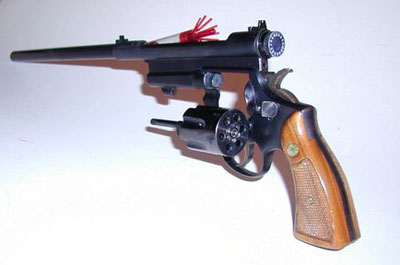
Tranquillizer pistol Mk12 showing velocity control and syringe
Murdoch developed a syringe gun in the 1950s. He designed a small valve that controlled compressed gas in the chamber. The valve let the shooter control, to a greater level of precision as the weapon was gradually perfected, the velocity of the tranquilliser dart. This advantage, plus the fact that the gun was extremely quiet, meant far less stress on the targeted animals.
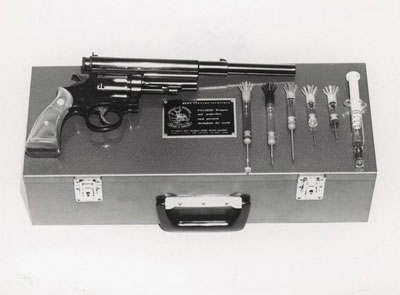
Field carrying case for Mk10 Paxarms pistol and selection of syringe projectiles
When Murdoch first started testing his gun the only tranquilliser drugs available were Curare, distilled from a recipe invented by Amazon Indians, and the alkaloids of nicotine, both caused fatal reactions in a high percentage of animals shot. Working in co-operation with the world’s major pharmaceutical companies, he helped develop more sophisticated drugs with precise and safe reactions.
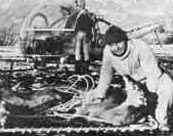
Two red deer stags recovering after having been immobilised from a syringe projectile and transported by helicopter
When interviewed by NZEDGE in 1999, Murdoch advised:
“After drugs are tested we expect them to react in a certain way, but this is difficult if the animal is in a stressed condition as their adrenaline levels rise and, this changes the reaction the drugs have.”
When many animals are alerted to danger, massive amounts of adrenaline are pumped into the bloodstream. Called Stress Syndrome by veterinarians, this surge of energy may allow them to escape from a predator, but leads to huge decreases in blood electrolyte levels. The resulting delayed shock can cause death.
This problem was exacerbated in hot climates such as Africa and northern Australia. Murdoch discovered that Stress Syndrome and delayed shock effect would be counteracted by administering a balanced electrolyte solution immediately after the animal was immobilised.
This practice is now routine to prevent shock during surgery for infants and the elderly. Murdoch’s observation and experimentation on the plains of Africa has saved the lives of millions of human accident victims.
In Auckland in 1979, the gun was first used on a human. A man took his wife hostage resulting in a dramatic Armed Offenders Squad call out. Talking to a police marksman via telephone, Murdoch was able to instruct him on where to shoot the offender and at what ‘setting’ to have the gun velocity.
Lateral Solutions
In May 1966, he filed three patents at Wellington Patent Office for a silent burglar alarm, a new electrical wiring system and heat detection cells for fire. The three inventions combined to form a revolutionary silent burglar and fire alarm. The alarm worked by triggering off an automatic phone call to either or both the local police station and fire station, depending on what was necessary. Patents were approved and arrangements for manufacture in Japan were made. The alarms were designed to operate without any audible or visible activity unless the external telephone leads were cut, in which case an audible alarm was triggered. Alarms from Murdoch’s design never went into production after authorities informed him that such a device would alter the balance of the electrical phone system. Now an alarm based on the same principle is British firm Chubb Securities most popular model.
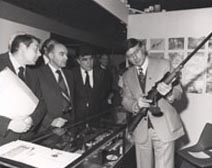
Colin Murdoch demonstrating Paxarms syringe equipment at the Brussels Inventor’s Fair 1976
There have been the other inventions: in 1976 Murdoch took honours at the World Inventors Fair held in Brussels for his childproof bottle cap design. The bottle cap works on joint principles of digital strength and ingenuity. It required thumb strength that would not be developed in a child, and a unique opening technique that would be completely foreign to a child. This was the essence of Murdoch’s work: a problem, the vision of a lateral solution, and an ingenious design. Murdoch’s childproof containers, tranquilliser weapons and syringe projectiles together won three gold and one bronze medal at the Brussels fair. In addition he has won design awards from the New Zealand Design Council for his Paxarms rifles, pistols and automatic syringe projectiles.
The Extraordinary Work of an Ordinary New Zealander
Murdoch owns the patents to over 40 inventions, but hasn’t profited from them.
“Patents give you the right to sue, they don’t give you the
money to sue. It just costs too much”, he told the Timaru Herald in 1995.
He says he is occasionally contacted by patent lawyers who inform him that a new invention incorporates elements of one of his many patents, and asked if he wishes to follow any course of action. He says he declines and gives the reason that he is satisfied knowing that the original idea was his.
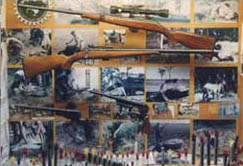
Display showcasing the products of Colin Murdoch’s inventive mind – tranquilzer rifles, pistols and syringe projectiles.
What Murdoch has fitted into his life has been extraordinary. Paxarms, the company he developed to build his tranquilliser guns is still operating in Timaru in 1999. He has travelled around the world over 30 times, has missed planes that fate led to crash or be hijacked, survived fire, hurricanes and charging animals. When the announcment of the first New Zealand Honours list was made on Queen’s Birthday Weekend 2000, Murdoch was made a member of the New Zealand Order of Merit, and in recognition of his extraordinary achievements, he was featured in Time magazine’s “The Most Influential People of the South Pacific” edition.
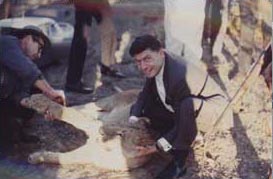
Lion King: Colin Murdoch and a tranquilized Lioness
When asked how he has achieved all he has, Colin Murdoch says it is due to equal parts knowledge, experience and lateral thinking. He is proud of what he has achieved and proud of where he is from (South Canterbury was also home to pioneer aviator Richard Pearce and jet boat inventor Sir William Hamilton). The tough new country where dreams and inventions met necessity and environment.
![]()
Commentary by Colin Murdoch
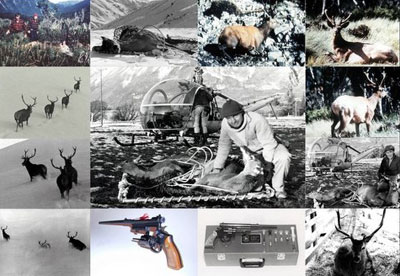
On the far left of the group of pictures, if you take particular note of the four stags seen running one behind the other over the frozen snow, you will see that in the next picture just below it, that they have all bunched together. All four were darted from the helicopter in very quick succession and each (in the next photograph below) actually collapsed very nearly next to one another and almost at the same time. The drug combination I was using is one I developed especially for its speed of absorption into the blood stream and very rapid immobilizing response. The speed of drug activity is obviously important when capturing wild animals. Wild red deer especially after they have been darted, can quickly cover considerable distances and would hide long before slower drugs can take effect. Many thousands of wild red deer were captured in New Zealand by hunters using my drug combination which was fast and very safe when used in the recommended dose. Captured animals were used to establish deer farms in New Zealand. Over a period of five years using this drug in syringes fired from my dart pistol or rifle, I captured a considerable number of wild deer by darting them from a helicopter. On the 6th. July 1968, at Wanaka I captured 13 wild deer. Many of them are pictured in this group of 13 photographs. Nine of the 13 deer were transported to Lincoln College to provide a herd of feral deer, to be used in a research project to be carried out there. They consisted of a fourteen pointer stag, one of the four stags pictured, five pregnant hinds and three yearlings. They were used to establish the viability of farming wild deer in New Zealand.
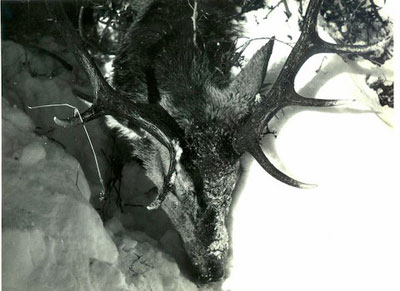
This stag pictured is an 8 pointer and one of the very first three wild red deer I captured from a helicopter in 1965. Each animal was injected with an immobilizing drug, delivered by an automatic syringe projectiles, fired from one of my early tranquillizer guns. The other two deer, an older hind and her yearling, were injected consecutively and all three animals were immobilized within minutes of each other. All three deer were transported in a net under the helicopter, back to holding pens.
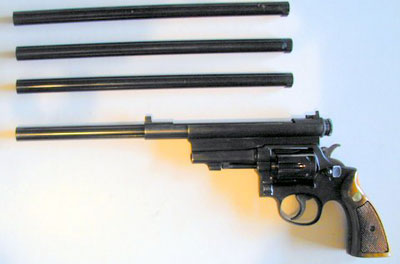
My very early acid ignition, muzzle loading pistol. When the spring loaded trigger is pulled it pivots the hammer above. When the acid soaked asbestos filling, makes contact with a short special chemical mixture “touch wick” it causes ignition of the alternative powder charge in the barrel to fire the weapon. Unlike flintlock weapons which when fired have a short delay, acid ignition is immediate.
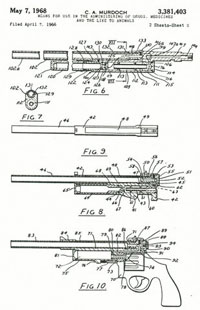
A copy of the actual patent drawings for my pistol type tranquillizer guns.
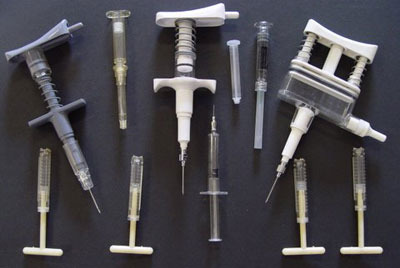
A selection of my patented hypodermic syringes and vaccinators.
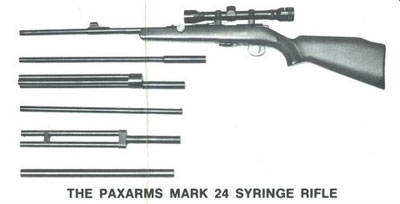
The Paxarms pistol with several interchangeable calibre barrels for different calibre and capacity syringe projectiles.
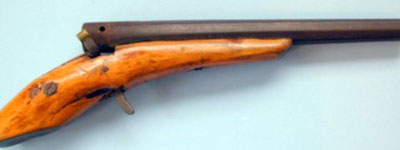
The syringe rifle with an extended range of alternative calibre barrels, plus a double barrel combination which fires two similar sized projectiles. This was designed to enable a drug dose to be delivered in one dart, with a relocation miniature transmitter in the other. Both darts to be delivered to the same animal simultaneously. Another special conversion is seen second down from the rifle. It is a rotating four barrel conversion, which enables four drug and transmitter combination darts to be fired one after the other in very quick succession. Ideal for wild deer capture where mobs were often encountered.
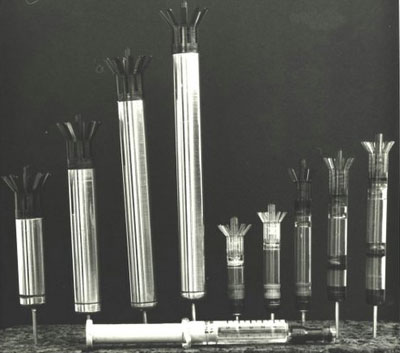
A selection of Paxarms syringe projectiles ranging in calibre and capacity from 0.5 mil in .465 calibre, to a maximum of 25 mil capacity in .750 calibre.

A combination drug and miniature transmitter dart of the kind fired from the four barrel conversion of the syringe rifle.
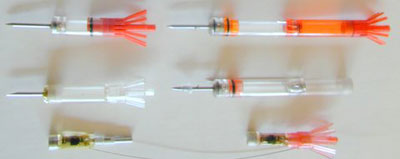
Two distinct types of darts. The two darts to the left are a drug dart and a miniature transmitter dart with the miniature transmitter plus its battery below it. The darts to the right of the picture are of a combination drug and transmitter dart. Below it is the drug part of the combination dart, with flight tail and transmitter removed from it.
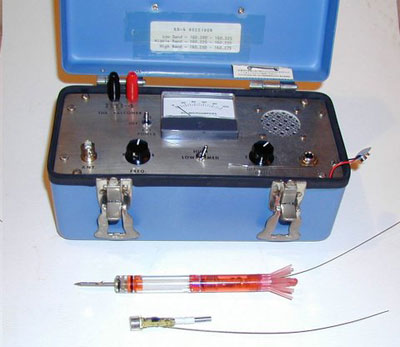
The radio receiver is very sensitive and highly directional when a dipole antennae is attached to it. The miniature transmitters are thick film printed circuit which provide a very effective signal that can be picked up from an airborne helicopter, at a distance of over 20 kilometers. The signal can then be followed to immediately above the animal which has been immobilized, even in very thick native bush. Immobilized animals tend to try to find a place to hide before the drug is fully effective. Some hide in small holes in the ground while others have been known to hide under a bank of a small stream. Regardless, the signal is still auditable.

Colin Murdoch the Horseman
As a young man, Colin Murdoch bred show ponies and horses. He owned the champion Arab stallion Grey Mist and apart from breeding Arabs, he bred Palominos and thoroughbread horses.

I am riding a bay 17 hand gelding thoroughbred cross called Bondy a rather rare “ambler” that was lovely to ride. He never trotted but tended to naturally “pace” which was an unusually smooth gate and his canter was also a wonderfully gentle pace. A very strong horse, capable of tirelessly walking (ambling) along at about 12 miles (19 km.) per hour. He was my favourite hack and was trained to allow me to fire a rifle from the saddle. I used him a great deal during my hunting years of private culling of red deer.
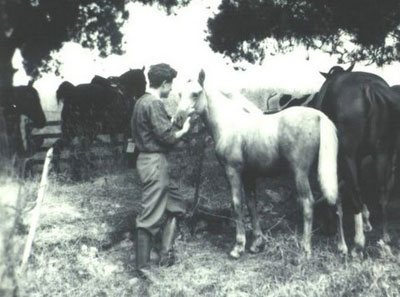
A picture of me with Solitaire, a foal and its liver-roan thoroughbred mother Lady Wharine. She was a beautiful Palomino pony of dappled gold, the colour of a newly minted gold coin. She had a pure white tail, white “socks” (hocks) and mane. She was the first of three Palomino foals I bred from the same mare with Gold Dust a champion Palomino and each of the foals in turn won pony championships at shows in the districts to which they eventually went.
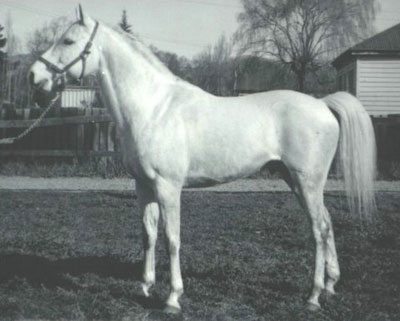
My stallion Grey Mist, was sired by Imrhaan an imported Arab entire. His mother was Princess Aladdin, a well bred Arab mare. He was a champion show, stud entire that during his life, at Horse Shows won five Grand Championships. He stood at stud for a number of years and served numerous mares sent from throughout the country each year, producing a great many highly rated show ponies.
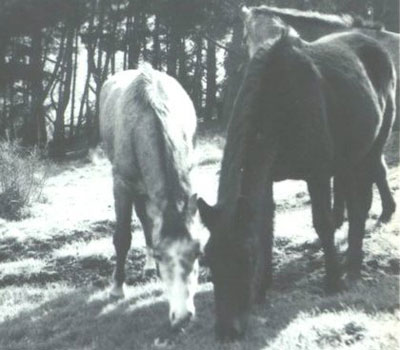
The small grey foal with black tail, is Silver heels, by my stallion and at maturity became a dappled silver grey that stood at 15 hands. A good height for a 10 year old child to start with and ride right through to adult hood. In addition to my stallion and the brood mares, foals and several saddle horses, I kept a number of pack horses which I used to pack out dried deer skins when I was hunting. Unfortunately, when I eventually came to Timaru 53 years ago to establish my Pharmacy and other businesses, I did not have access to land for grazing, so had to dispose of all my horses. Needless to say I still miss them very much.
Colin Murdoch the Sailor
When Colin Murdoch retired over 20 years ago, he spent three years fitting out the “Hauroko”, a 45 foot ocean going cutter yacht which he sailed up until a year ago.

The history of Hauroko goes back more than 20 years, to the time not long after I decided to retire from pharmacy, my manufacturing laboratories and other activities to concentrate on Paxarms which was very demanding. By constant necessity, I was frequently required yearly to travel to many parts of the world. Five and six world trips to numerous countries throughout the world each year, is not only extremely tiring but due to constant rapid adjustments to extreme climatic differences, very hard on the body too.
When the directors and management of a much larger public company approached me and offered to buy Paxarms, I immediately saw an opportunity to completely lighten load and fully retire. But having worked at high pressure for a very long time, I simply could not suddenly stop. I looked for something to do which could be treated like a normal 40 hour work week, to help me to unwind.
At that time I heard about a large yacht a couple were building, but due to the ill health of a child, they could no longer afford to complete. At that point the hull was nearly finished but none of the fittings had been started and in effect the entire final work of completion had really just reached the expensive stage. There was scope for a new owner to design and complete the yacht in the style he wished.
I looked at the hull and the plans and was very impressed with the standard of workmanship which so far had gone into the construction. The couple had certain materials available that would be included in the price asked, so we quickly came to a satisfactory conclusion. I purchased the hull and immediately took it to the Paxarms factory property which I still owned. It suited the new owners of my Paxarms Company to have me close by as consultant for a few years. It was agreed that I could utilize factory machinery and was allotted part of the space at the factory in which to work.
The arrangement worked well and I was able to work away on the boat and when needed, assisted with problems met by the new owners of Paxarms. Inquiries in respect of animal drug doses and other technical matters constantly cropped up and I attended to them as needed. The standard of workmanship on the hull was exceptional. All measurements were extremely accurate which made my job of creating interior fittings much simpler. I was able to work to the plans to make the fittings on a work bench within the factory, then simply take them on board and fix them in place.
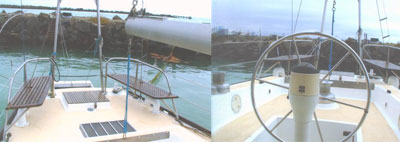
From time to time one or other of two commercial boat builders came when they had a gap in their own work, to advise and assist me with the more complicated work where for example the beltings and toe rails had to be fitted to the hull. Having experience to assist at these times proved very helpful to me. I worked from 8 am till 5 pm each day, Monday to Friday and went home. I enjoyed the work and the challenge it represented. There was a lot of satisfaction in seeing the yacht take shape and all the engineering jobs completed and eventually for it to be launched. Rigging was done after it was launched and with mast and rigging complete, the sails were fitted.
You learn a lot about the science of sailing when you work on the boats construction. Because all the fittings were made with treated white pine, with ply wood flooring and bulkheads, bases and frames of fittings Mahogany louver cupboards and doors, the displacement was certainly much lighter yet stronger than perhaps others may have achieved with heavier materials. When launched it became clear that the water line drawn precisely to scale as directed by the plans, along the side of the yacht, rose higher towards the bow than was expected when the boat was launched. I did not hesitate to add another four tons of lead in the keel which fixed it perfectly. Made the boat stiffer and more stable under sail too.
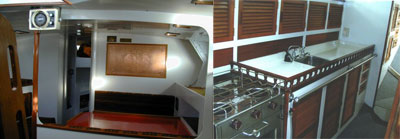
For a similar reason I extended the rudder down by another 16 inches (40 cm.) and forward of the rudder stock by 10 inches (25 cm.) which was an aid especially for the hydraulic steering and auto pilot in storm conditions. Hauroko sails like a dream and is very stable in all weather conditions. It heels over less and rides over swells and waves with very little forward and aft motion or sideways movement, the major cause of sickness on most boats.
We regularly sailed with a group of friends on weekends and made trips to Oamaru in the south and Akaroa to the north. We and a group of friends lived on board for long weekends and at times for a week or more. All invited guests took turns at the wheel and helped when necessary to change the sales “to go about” after a “tack”. The auto pilot at times was turned on and set so we could sail on a set course for an hour or two during which times, so long as a constant watch was being kept, all of us could talk with friends relax and enjoy the sensation of noiseless motion through the water.
Often we fished with sea rods as we sailed. Caught fish too and at times stopped at known radar co-ordinates where fishing was exceptional, to catch blue cod and other species. One of the large deep freezers on board, being filled to capacity with gutted fish in very short time. I always wanted to sail to Picton, but cancer changed my life 15 years ago, & unfortunately put an end to doing that.
Hauroko was sold and went to Picton last year. The new owners motor sailed from Timaru on a weekend and arrived in Picton early on the following Monday morning. A long trip in a little over 50 hours including stops at Akaroa and Lyttleton on the way.
Further reference:
For a short, but concise entry on Murdoch’s inventions:
Modofsky, L. (1999) “The Most Influential People of the South Pacific”, Time, October 5
For an excellent profile of Murdoch’s life and work read:
Riley, B. (1995) Kiwi Ingenuity – A Book of New Zealand Ideas and Inventions. AIT Press, Auckland, New Zealand.
For an interview with Murdoch:
O’Neill, P. (1995) “A man for all inventions”, The Timaru Herald, May 13
For a profile of Murdoch’s life and work:
Designscape 91 magazine
Murdoch’s inventions:
1940 Acid ignition muzzle-loading gun
1956 Disposable sterile prefilled hypodermic syringe type A
1957 Disposable sterile prefilled hypodermic syringe type B
1958 Designed rotary type vacuum pump
1958 Disposable sterile prefilled hypodermic syringe type C
1959 Automatic syringe projectile, depression valve type
1959 Designed Prototype Syringe rifle
1960 Primary design syringe rifle, adjustable velocity control
1960 Automatic syringe projectile, momentum activated valve
1961 Moulded plastic syringe projectile darts
1961 Invented and registered worldwide trade name Paxarms & logo
1962 Designed prototype single shot syringe pistol
1963 Moulded plastic projectile dart, improved flight tails
1964 Prepared ampoule type moulded plastic syringe dart
1964 Pressurising and release tail valve syringe dart system
1964 Blow moulded multi-dose vaccine containers
1965 Disposable automatic multi-dose 2ml vaccinator syringe
1965 Designed 2nd generation breech load rifles and revolver pistols
1965 Interchangeable calibre barrels, rifles and pistol designs
1966 Simplified external valve needle seal type syringe darts
1966 Twin barrel dual firing syringe pistols – stun system
1966 Automatic dialling burglar and fire, silent alarm
1966 Flat tape multi-strand electrical wiring and adapter plugs
1966 Heat sensing cells for fire detection
1967 Disposable veterinary multi-dose scratch vaccinators
1967 Sterile self filling syringes for blood samples
1971 Animal marking projectile for dart rifles and pistols
1971 Primary design, range-finder telescopic rifle sight
1972 Instruments for assisting birth in domestic animals
1972 Advanced rifle and pistol projectile velocity control system
1973 Improved design range-finder telescopic rifle sights
1973 Dispensing means for liquid or pasty substances
1974 Designed miniature transmitter relocation darts
1974 Automatic topical applicators – veterinary
1974 Designed combination transmitter and drug dart systems
1975 Designed advanced reticules rangefinder telescopic sight
1975 Disposable hypodermic – unstable dry-drug plus solvent type
1975 Rotating four barrel rifle for combined transmitter darts
1975 Short stroke variable dose drenching gun
1975 Short stroke variable dose vaccinator syringe
1975 Repeat action self filling liquid spray unit
1976 Vacuum drainage unit
1976 Sporting rifle range-finder telescopic sights, four types
1976 Tranquilliser rifle type, telescopic rangefinder sight
1976 Child-proof medical container closures
1977 Third generation velocity control, advanced rifle-pistol designs







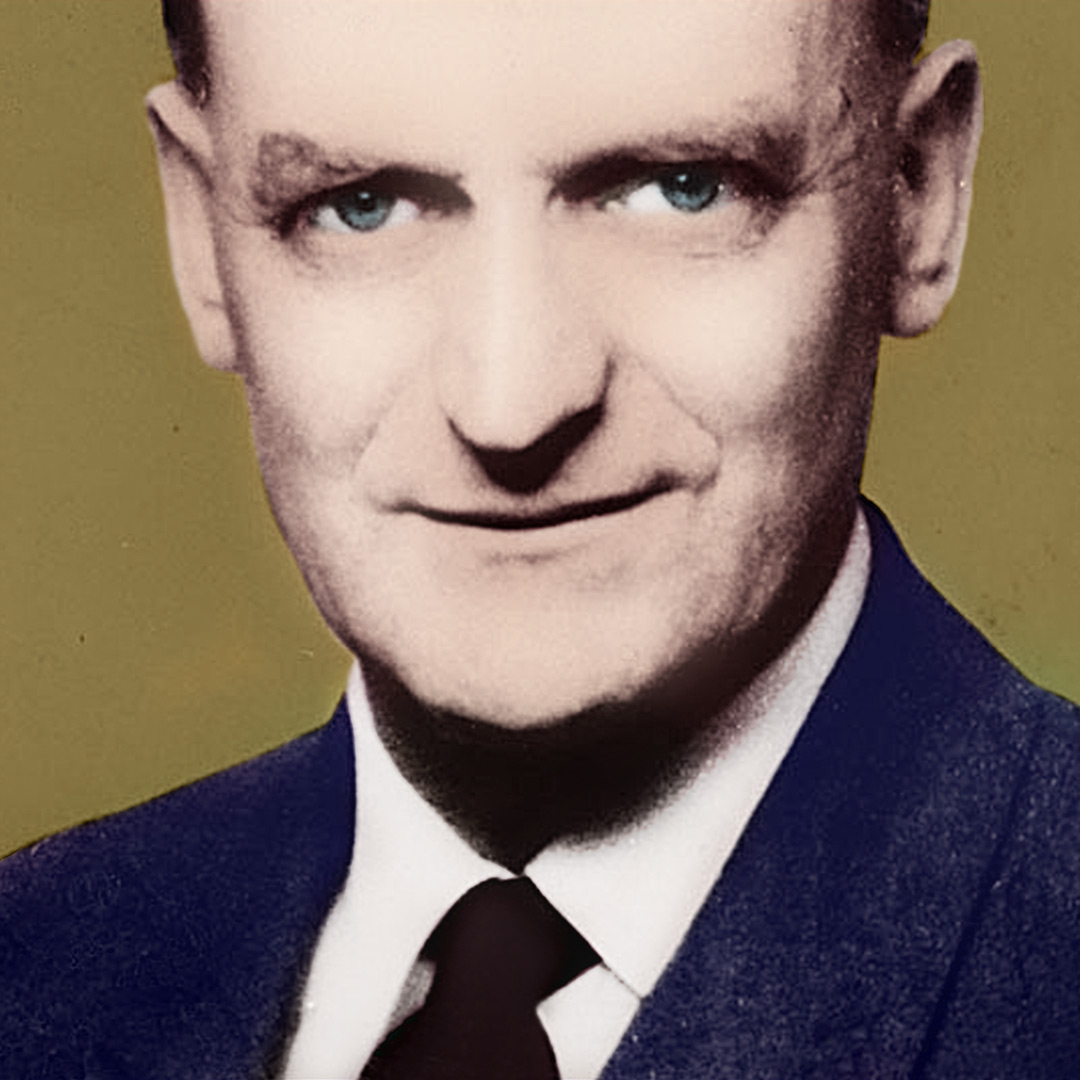





Good achievement